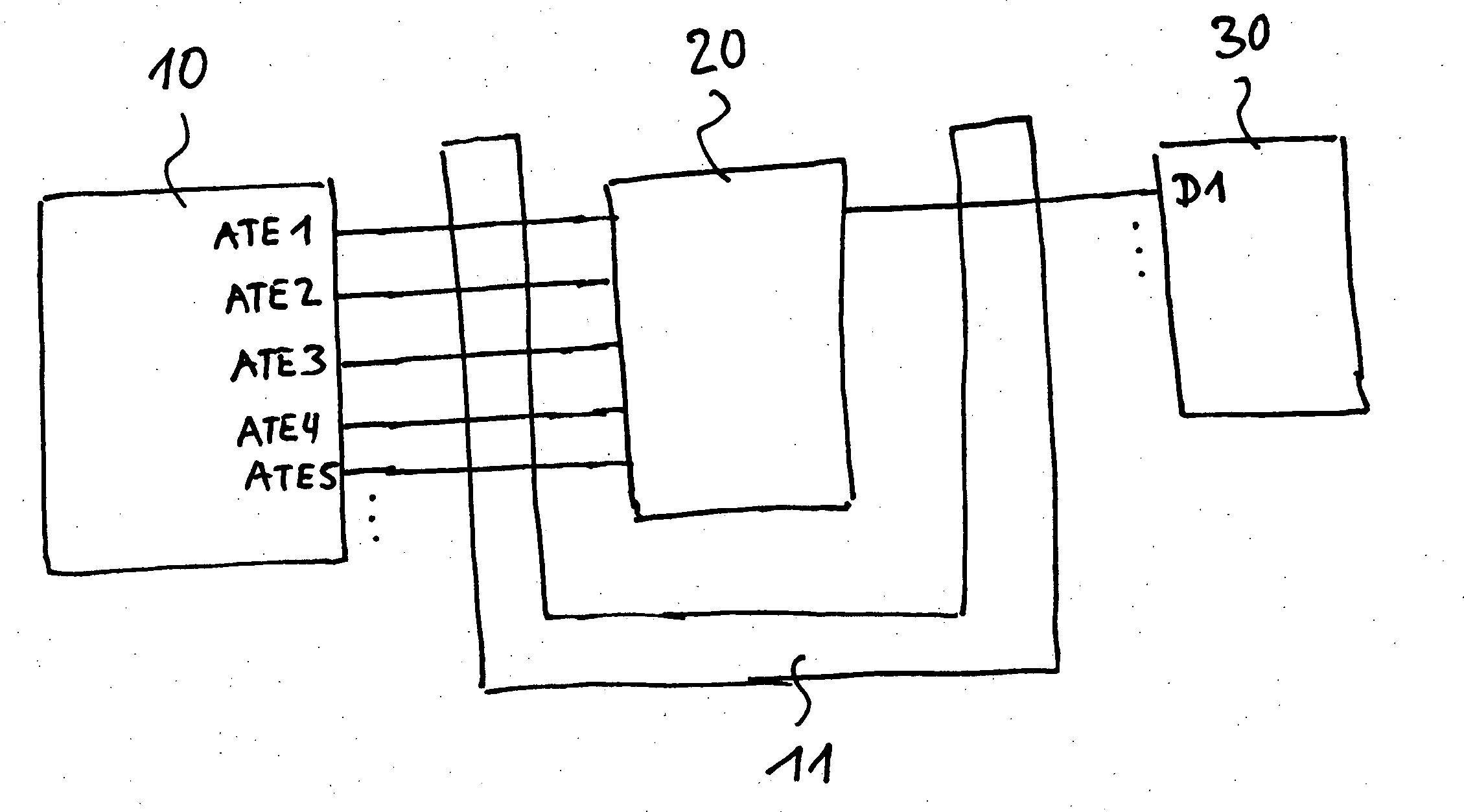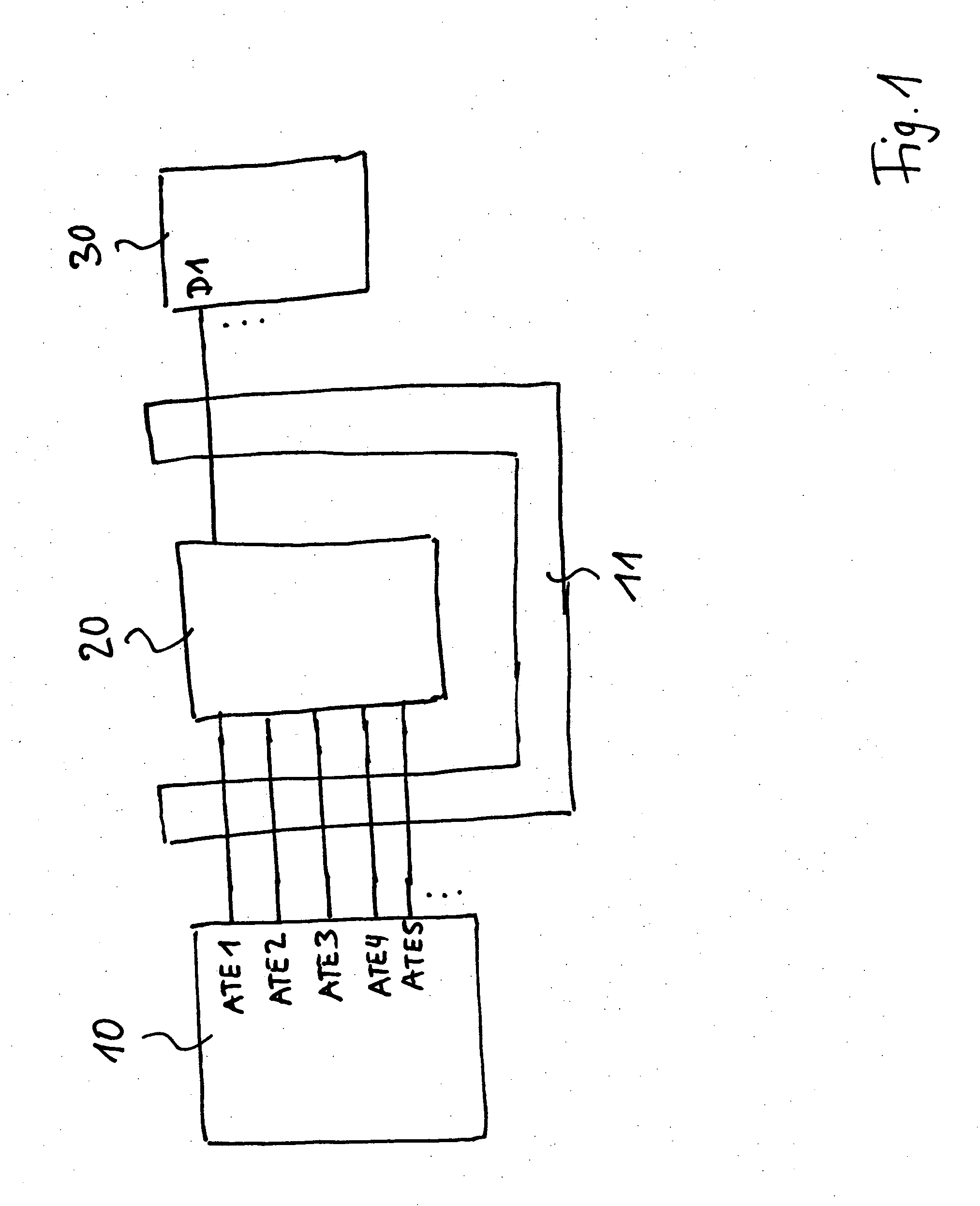Pin coupler for an integrated circuit tester
- Summary
- Abstract
- Description
- Claims
- Application Information
AI Technical Summary
Benefits of technology
Problems solved by technology
Method used
Image
Examples
first embodiment
[0034]FIG. 2 shows a channel coupler for serializing stimulus data received from ATE-pins, further referred to as channel serializer 200. ATE1-ATE4. Channel serializer 200 comprises an ATE Interface 210, a serializer synchronizing circuit 220, a multiplexing circuit 230, a high-speed transfer element or flip-flop 270, a serializer clock circuit 250, a jitter insertion circuit 240 and a DUT interface 260. ATE interface 210 comprises drivers 211-215 each connecting one ATE-pin ATE1-ATE4 to the data inputs of a pair of two single edge-triggered transfer elements or flip-flops 221-228 comprised by the serializer synchronizing circuit 220 and connecting the fifth ATE-pin ATE5 to the trigger inputs of the flip-flops 221-228, marked each by an arrow, and to clock circuit 250. The trigger inputs of the flip-flops from top to down are antivalent, being symbolized by a dot in front of every second trigger input. Clock circuit 250 receives a reference clock (signal) ATECLK from fifth ATE-pin A...
second embodiment
[0048]FIG. 3 shows a channel coupler adapted for working in the opposite direction compared to the channel serializer 200 shown in FIG. 2 and described above. The channel parallelizer 300 comprises a comparator 360, a high-speed flip-flop 350, a de-multiplexer circuit 340, a Parallelizer synchronizing circuit 320, an ATE-interface 310 and a parallelizer clock circuit 370. Comparator 360 is connected to the DUT-pin D1 receiving a high-speed response data signal from the DUT not shown in FIG. 3. ATE channels ATE1-ATE5 are again located on the left, whereas the DUT-pin is again located right. The signals flow is now mainly in the opposite direction, i.e. from the right side to left side. The signal flow is marked with arrows at the corresponding connections. However, similarly to FIG. 2, the fifth ATE channel ATE5 is again used for providing reference clock ATECLK to the channel coupler.
[0049] Comparator 360 receives at its inputs the high-speed data signal from DUT-pin D1 as well as a...
PUM
 Login to View More
Login to View More Abstract
Description
Claims
Application Information
 Login to View More
Login to View More - R&D
- Intellectual Property
- Life Sciences
- Materials
- Tech Scout
- Unparalleled Data Quality
- Higher Quality Content
- 60% Fewer Hallucinations
Browse by: Latest US Patents, China's latest patents, Technical Efficacy Thesaurus, Application Domain, Technology Topic, Popular Technical Reports.
© 2025 PatSnap. All rights reserved.Legal|Privacy policy|Modern Slavery Act Transparency Statement|Sitemap|About US| Contact US: help@patsnap.com



